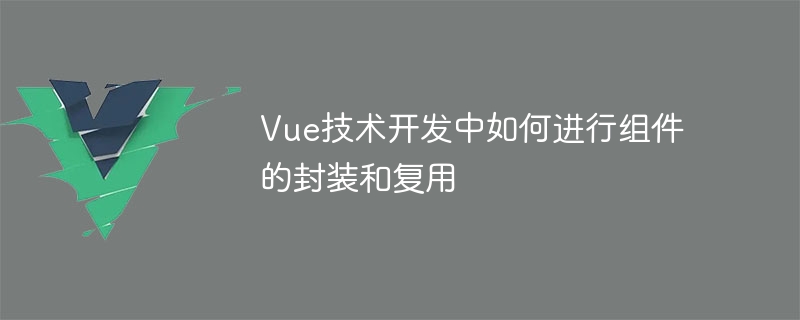

How to encapsulate and reuse components in Vue technology development
In Vue.js development, componentization is a very important concept. The encapsulation and reuse of components can greatly improve the maintainability and reusability of code, reduce the amount of code redundancy, and also facilitate team collaboration and improve development efficiency. This article will introduce how to encapsulate and reuse Vue components and provide specific code examples.
<template>
<div>
<PrivateComponent></PrivateComponent>
</div>
</template>
<script>
import PrivateComponent from "@/components/PrivateComponent.vue";
export default {
components: {
PrivateComponent,
},
};
</script>In the above example, we introduced a private component named PrivateComponent in the current component, and Registered in components option. In this way, the PrivateComponent component can be used directly in the template.
// main.js
import Vue from "vue";
import GlobalComponent from "@/components/GlobalComponent.vue";
Vue.component("global-component", GlobalComponent); In the above example, we use the Vue.component method to register GlobalComponent as a global component . In this way, the component can be used in any component using <global-component></global-component>.
<template>
<div>
<slot></slot>
</div>
</template>
<script>
export default {
};
</script>In the above example, <slot></slot> represents a slot, which can be understood as an occupancy Character. When we use this component, we can add content between <slot></slot>:
<AppComponent> <h1>这里是动态内容</h1> </AppComponent>
In this example, <h1>here is Dynamic content</h1> will replace <slot></slot>, and the final rendered content will be:
<div> <h1>这里是动态内容</h1> </div>
By using slots, We can dynamically add content to components to improve the flexibility and reusability of components.
// baseMixin.js
export default {
methods: {
log() {
console.log("这是一个公共的方法");
},
},
};
// component1.vue
<script>
import baseMixin from "@/mixins/baseMixin";
export default {
mixins: [baseMixin],
};
</script>
// component2.vue
<script>
import baseMixin from "@/mixins/baseMixin";
export default {
mixins: [baseMixin],
};
</script>In the above example, we defined a Mixin named baseMixin, which contains a public methodlog. Then in component1.vue and component2.vue, baseMixin is introduced through the mixins option. In this way, the log method can be used in both components.
By encapsulating and reusing components, we can improve the maintainability and reusability of the code, while also facilitating team collaboration and improving development efficiency. In actual projects, we should rationally use component encapsulation and reuse technology based on actual needs and project scale.
The above is an introduction to how to encapsulate and reuse components in Vue technology development. I hope it will be helpful to everyone. There are more advanced techniques that can be explored in actual development, such as dynamic components, asynchronous components, etc. I hope you can continue to learn and apply them in actual projects.
The above is the detailed content of How to encapsulate and reuse components in Vue technology development. For more information, please follow other related articles on the PHP Chinese website!




